 |
 |
 |
| |
Cognitive Function Fell in 25% of Canadian HIV Group Over 10 Years
|
| |
| |
International Workshop on HIV & Aging 2023, October 26-27, Washington, DC
Reported by Mark Mascolini for NATAP and Academic Medical Education
Cognitive function changed little in the first 4 years of follow-up in the Canadian Positive Brain Health Now cohort, whose members have HIV infection [1]. But 1 in 4 people had declining cognitive function through 10 years of follow-up, driven in part by indicators of vascular or liver disease risk and a history of learning disability or attention deficit disorder.
Predictors of cognitive impairment in people with HIV have come from cross-sectional studies that look at a single slice of time. Positive Brain Health Now researchers conducted this new study to trace cognitive changes and their drivers through 10 years in older adults responding to antiretroviral therapy.
At 5 HIV clinics in 2013-2016, the cohort enrolled 856 people who had HIV infection for at least 1 year and averaged 54 years in age. They all had comprehensive biopsychosocial testing every 9 to 12 months, including B-CAM to assess global cognitive ability. B-CAM records responses in 8 domains in a supervised computerized test that can be administered remotely.
Researchers applied group-based trajectory analysis to longitudinal B-CAM data to discern distinct groups with a similar evolution of cognitive function. Then a generalized model with a log link picked out baseline variables common to people who had a declining cognitive trajectory. The result is an estimate of relative risk rather than relative odds.
Prior work recorded little change in cognition over 4 years of follow-up, so this 10-year trajectory analysis began with 242 cohort members who had logged at least 4 years in the study. Through an average 7.3 years of follow-up, the researchers traced three trajectories: flat (49% of the group), inverted U (26%), and declining (25%). They assigned 105 cohort members to the flat trajectory, 59 to the inverted U, and 57 to the declining trajectory. Thus about 1 in 4 cohort members (57 of 221) had a falling trajectory.
The 162 cohort members assigned to a flat or declining trajectory averaged 54.3 years in age, 87% were men, 80% of European descent, 70.4% with postsecondary education, and 43.5% with paid employment at least 15 hours per week. HIV duration averaged 18 years, nadir CD4 count 188, and current CD4 count 643. A large majority, 95%, had an undetectable viral load.
Relative risk calculations (with 95% confidence intervals) identified a dozen factors associated with declining cognitive function:
- Veterans Aging Cohort Study (VACS) quartile above 16 vs below 7: RR 2.58 (1.33 to 5.00)
- Framingham quartile 6 to 30 vs 0.5 to 5: RR 2.18 (1.23 to 3.85)
- Age 60 or older vs younger: RR 2.12 (1.44 to 3.13)
- Not at all vs a lot of planning for the future: RR 2.12 (1.15 to 3.91)
- ALT liver enzyme 25 to 204 vs 9 to 24: RR 1.82 (0.94 to 3.51)*
- Hemoglobin 155 to 178 vs 121 to 154: RR 1.69 (1.11 to 2.55)
- HDL cholesterol 0.5 to 1.2 vs 1.2 to 5.1: RR 1.61 (1.02 to 2.54)
- Ever diagnosed with learning or attention deficit disorder: RR 1.60 (0.92 to 2.79)*
- Cannabis use current vs past or never: RR 1.57 (1.04 to 2.36)
- FIB-4 (liver fibrosis) 1.65 to 4.95 vs 0.28 to 1.21: RR 1.56 (0.95 to 2.55)*
- Albumin 42 or lower vs 43 to 47: RR 1.56 (0.94 to 2.61)*
- Obese vs normal: RR 0.26 (0.09 to 0.78) (protective)
Factors not related to declining cognitive function included sex, nadir CD4 count, statin use, blood pressure, loneliness, depression/anxiety, sleep quality, and tobacco/alcohol use.
Four variables emerged from multivariate analysis as predictors of cognitive decline:
- Age 60 or older vs younger: RR 4.79 (0.97 to 23.64)*
- Ever diagnosed with learning or attention deficit disorder: RR 12.30 (1.61 to 93.91)
- Albumin 42 or lower vs 43 to 47: RR 2.98 (0.97 to 9.19)*
- Obese vs normal: RR 0.12 (0.01 to 0.94)
The Positive Brain Health Now researchers did not venture an opinion on how obesity lowers the relative risk of dwindling cognitive function[ but in discussion it was said BMI might represent a healthier overall body composition, while a measure of jut VAT might identify a worse phenotype]. They underlined four factors linked to worsening cognition, not all of which survived multivariate analysis: older age, vascular or liver disease risk indicators, current cannabis use, and history of learning or attention deficit disorder. They also proposed that lack of motivation in planning for the future "may be an early indicator of cognitive decline."
Reference
1. Brouillette M, Thomas R, Harris M, et al. Predictors of cognitive decline over 10 years among older adults with well-controlled HIV from the Positive Brain Health Now Cohort. International Workshop on HIV & Aging 2023, October 26-27, Washington, DC. Abstract 8.
*A 95% confidence interval that crosses 1.0 technically puts an association outside the bounds of statistical significance.
Link to oral session:
https://www.youtube.com/watch?v=x2tVH2yHKHI
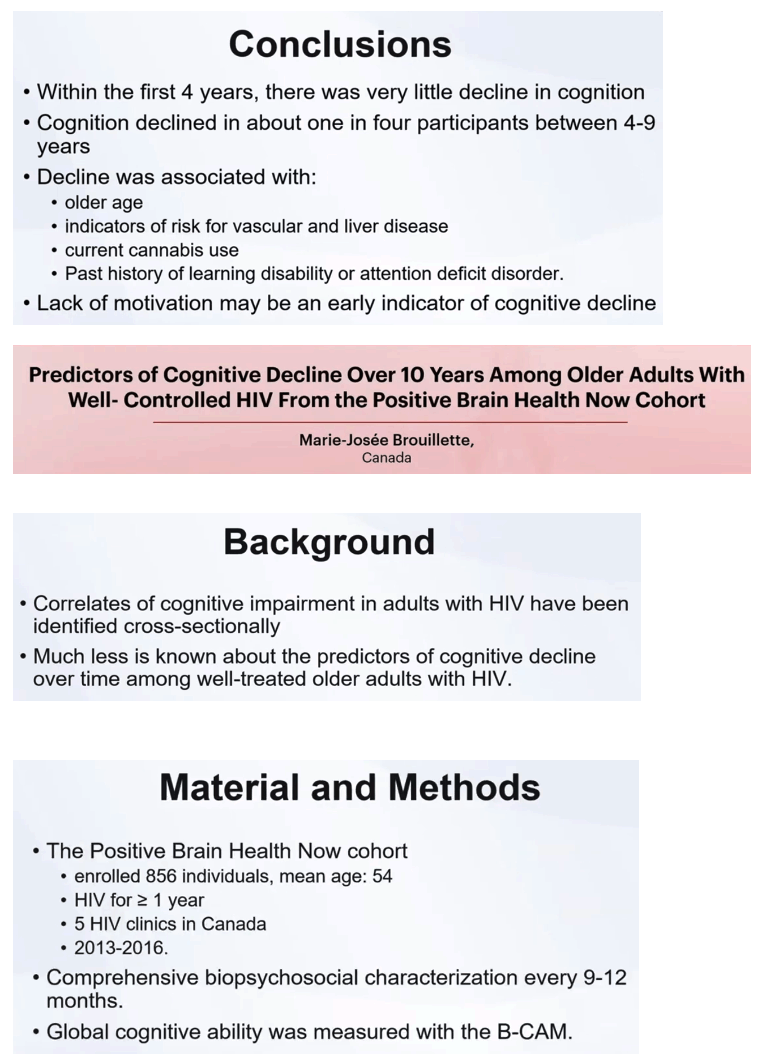
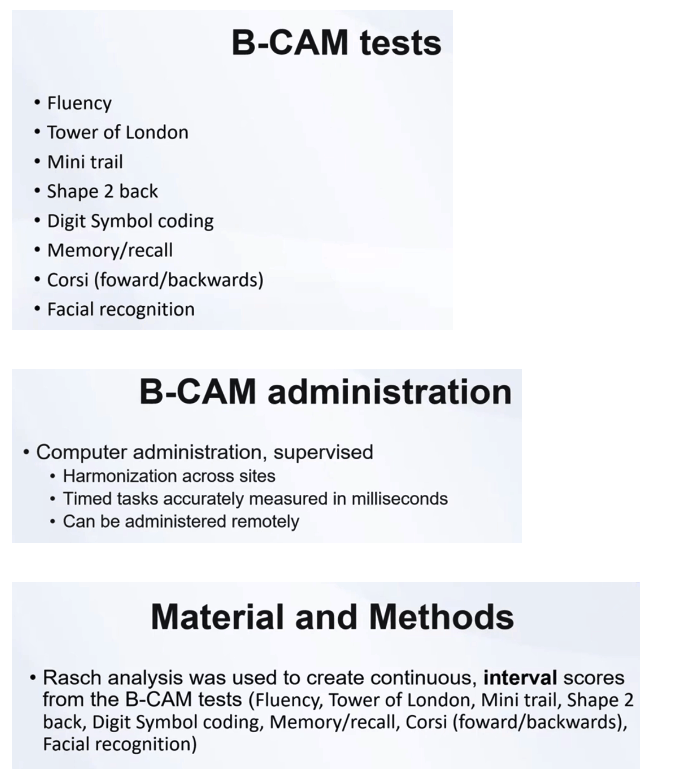
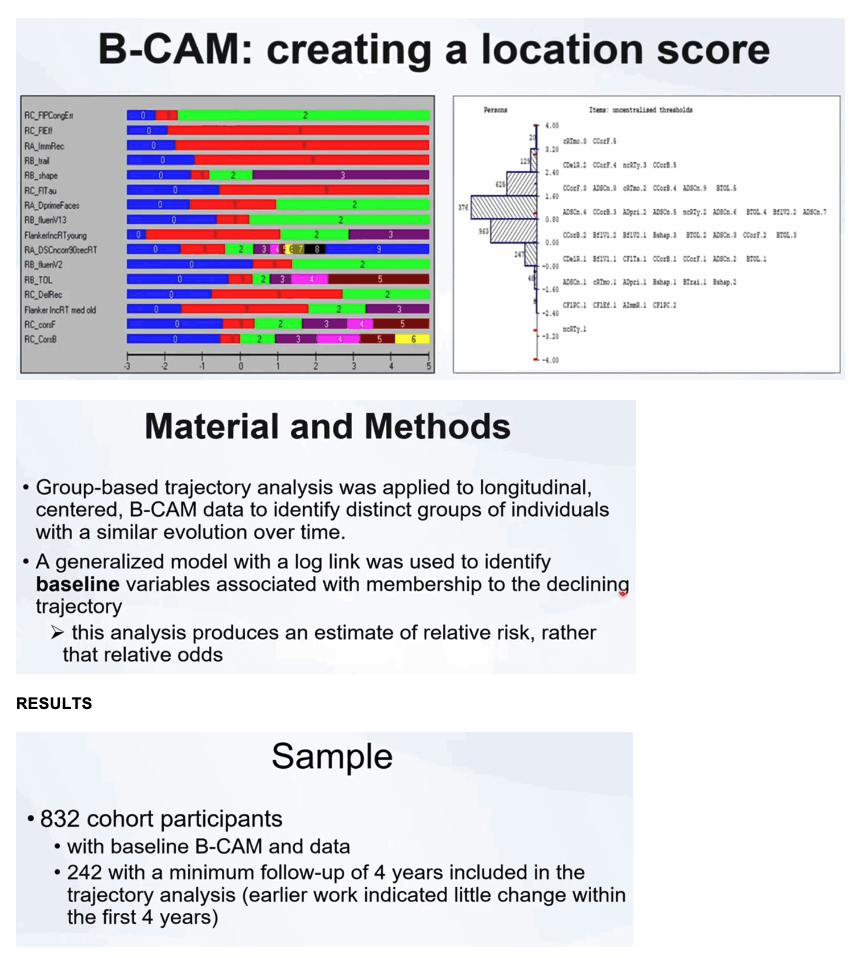
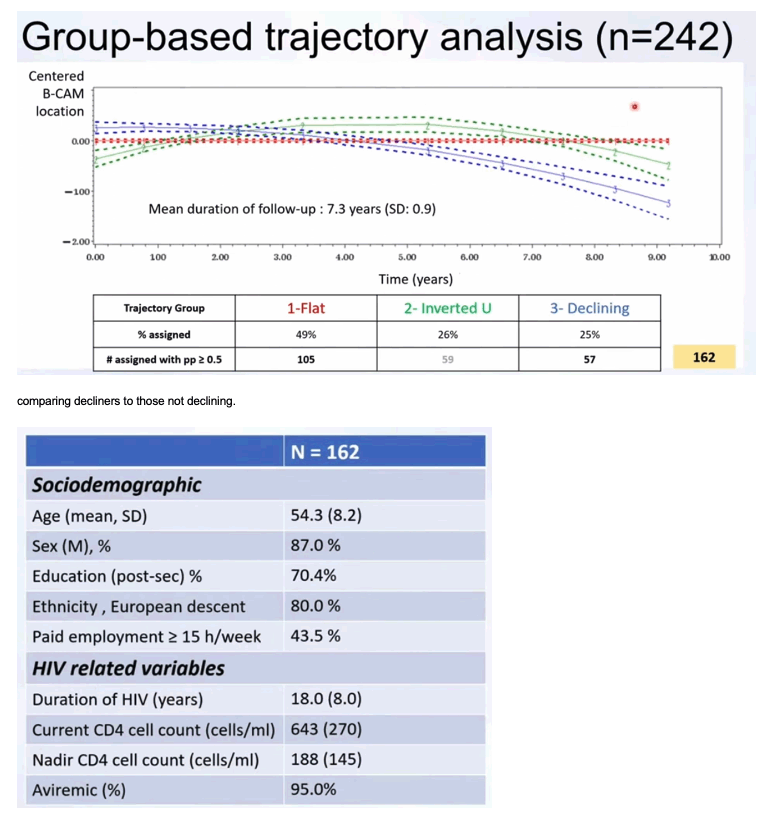
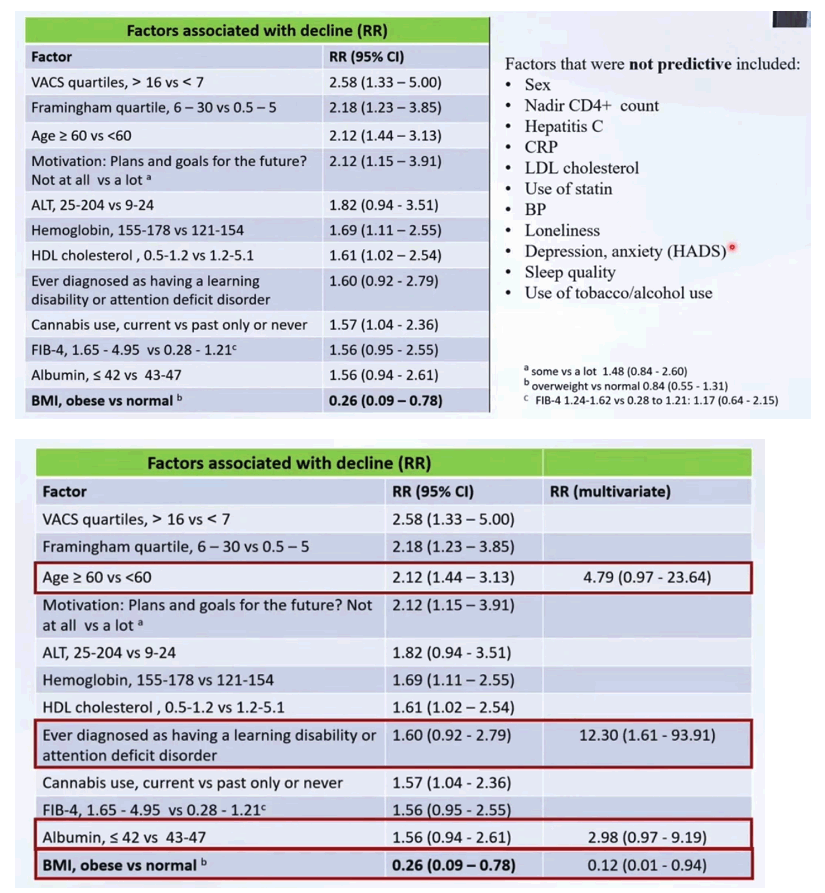

|
| |
|
 |
 |
|
|